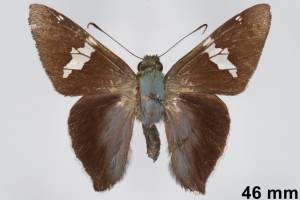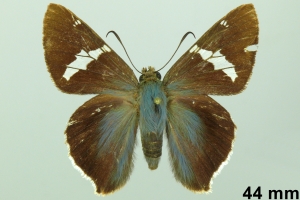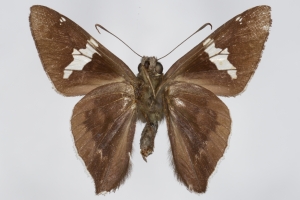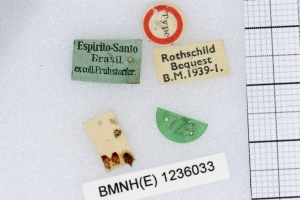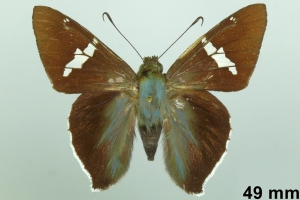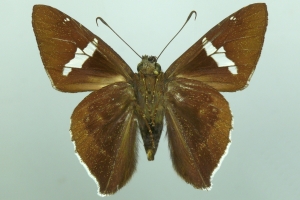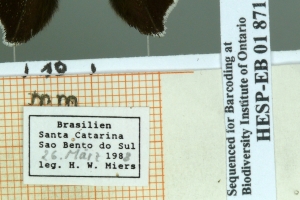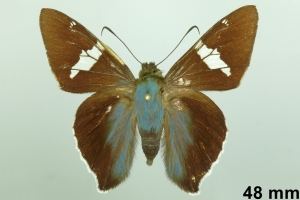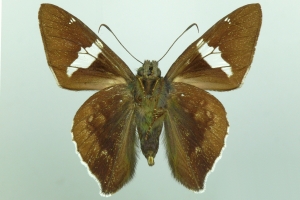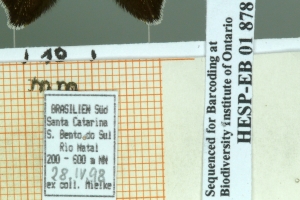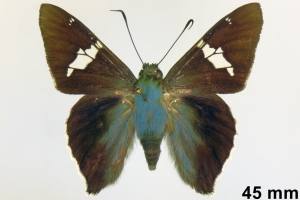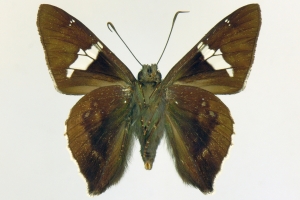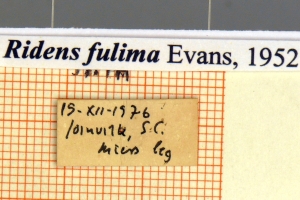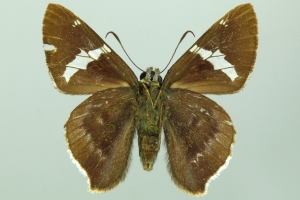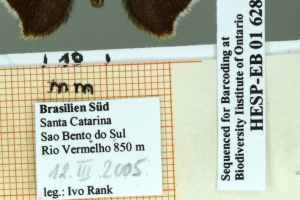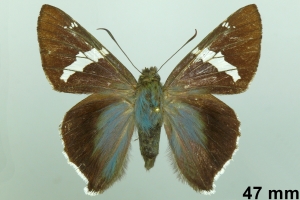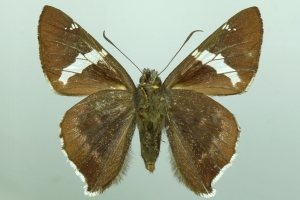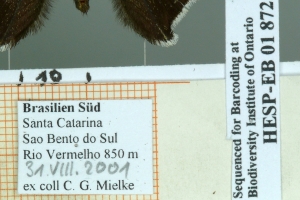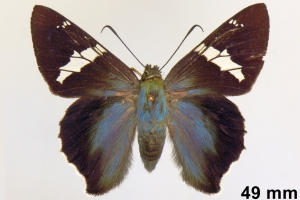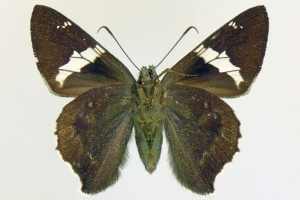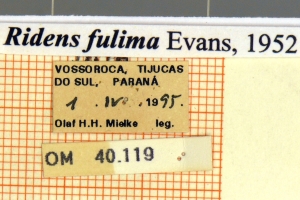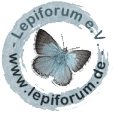Länder:

 +1Kontinente:SA
+1Kontinente:SA


 +1Kontinente:SA
+1Kontinente:SAInhalt
2. Diagnose
2.1. Männchen
1-3: Holotypus ♂, Daten siehe Etiketten (fot.: Nick V. Grishin, Fotos bearbeitet: Michel Kettner), © Images copyright Trustees Natural History Museum, used with permission.
4-6: ♂, Daten siehe Etiketten (coll., det. & fot.: Ernst Brockmann, Fotos bearbeitet: Michel Kettner)
7-9: ♂, Daten siehe Etiketten (coll., det. & fot.: Ernst Brockmann, Fotos bearbeitet: Michel Kettner)
10-12: ♂, Daten siehe Etiketten (fot.: Ernst Brockmann, Fotos bearbeitet: Michel Kettner), coll. Departamento de Zoologia, Universidade Federal do Paraná, Curitiba, Paraná, Brazil.
2.2. Weibchen
1-3: ♀, Daten siehe Etiketten (coll., det. & fot.: Ernst Brockmann, Fotos bearbeitet: Michel Kettner)
4-6: ♀, Daten siehe Etiketten (coll., det. & fot.: Ernst Brockmann, Fotos bearbeitet: Michel Kettner)
7-9: ♀, Daten siehe Etiketten (fot.: Ernst Brockmann, Fotos bearbeitet: Michel Kettner), coll. Departamento de Zoologia, Universidade Federal do Paraná, Curitiba, Paraná, Brazil.
3. Weitere Informationen
A catalogue of the American Hesperiidae
3.1. Faunistik
Nach [Global Biodiversity Information Facility] kommt die Art in Brasilien und Honduras? vor. Evans (1952: 83) meldete in seiner Erstbeschreibung: "fulima nov: ♂ Espirito Santo: type B.M. Fig Seitz pl 168, underside, as fulminans. B.M. 1 ♂ Pará. 7 ♂ 2 ♀ S Brazil (Espirito Santo. Parana. Rio Grande. Theresopolis. Santa Catharina)." Er kannte die Art also nur vom Süden Brasiliens mit Typenfundort Esperito Santo.
(Autoren: Erwin Rennwald & Michel Kettner)
3.2. Literatur
- Erstbeschreibung: Evans, W. H. (1952): A Catalogue of the American Hesperiidae indicating the classification and nomenclature adopted in the British Museum (Natural History). Part II (Groups B, C, D) Pyrginae. Section 1: i-v, 1-178, pl. 10-25. — Digitalisat auf biodiversitylibrary.org: [83] und [pl. 17 (fig. 8)]
- Zhang, J., Cong, Q., Shen, J., Song, L. & N. V. Grishin (2025): Update to: Advancing butterfly systematics through genomic analysis. — The Taxonomic Report of the International Lepidoptera Survey 12 (6): 1-36. [zum PDF auf ncbi.nlm.nih.gov] bzw. [zum open-access-Artikel mit PDF-Download auf zenodo.org]


